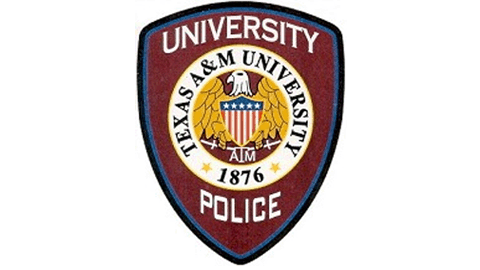
Friday marks the last day after 46 years as a student and employee at A&M for University Police Chief Elmer Schneider.
He came to A&M in 1967 with the idea of teaching vocational agriculture to high school students.
Then he worked as a dispatcher in 1970, joined UPD the following year, rose through the ranks where he was named chief nine years ago.
A&M had 15,000 students when Schneider was in school. Now there’s more than 50,000.
And from two officers per shift, the department has grown to a total staff of 133. That includes 70 commissioned officers and 42 security officers.
And as technology has helped, Schneider says the most valuable resource continues to be the people.
And Friday afternoon from 3 until 5 p.m., the university is holding a retirement reception at the Bush Library in the Annenberg Conference Center banquet room. A reception program will start at 3:45 p.m.
Audio Player
WTAW’s Bill Oliver visits with Elmer Schneider.More information courtesy of an A&M news release:
Few college graduates ever have the opportunity to serve at their alma mater for their entire careers. Far fewer — perhaps only one — have had the opportunity to serve entire careers in helping keep their alma maters safe. That’s the legacy of Texas A&M University Police Chief Elmer Schneider, who is retiring Friday (April 5).
Schneider, a Texas A&M graduate (Class of 1971), began his law enforcement career inauspiciously as a student worker/dispatcher in the university’s police department, never thinking, he admits, that it was the start of more than four decades — 42 years to be precise — of what evolved, in a real sense, into a labor of love. He literally rose through the ranks, holding virtually every position in the department: police officer, sergeant, criminal investigator, captain, assistant chief and, for the past nine years, chief.
Schneider, who came to Texas A&M in 1967 from the small South Texas town of Devine in pursuit of a degree in agricultural education, says he had planned after graduation to return home to a high school teaching career because he wanted to work with students. Instead, he got married during his second year in Aggieland, dropped out of school for a year, during which time he accepted an entry-level position with the campus police and started moving up the ranks — going back to school and earning his B.A. degree in the process.
“The longer I stayed here, the more it became apparent to me that I was still fulfilling my plan to work with students — just in a different capacity than what I originally planned,” he notes.
There were far fewer students then with whom to work — about 15,000 — than now, with a student body of 50,000.
The police force had far fewer officers then, too, and was more a security operation than the bona fide police force into which it has emerged. Schneider recalls that during the night-time hours back in his early working days, typically only two officers were on duty to patrol the entire campus, operating out of the basement of the YMCA Building.
That’s in sharp contrast to the current unit, which has 133 authorized positions, including 70 state-certified police officers and 42 security officers, along with a host of other staff members serving in support capacities. It now has a fully staffed communications center, a records office, an investigations division, an evidence technician crime-prevention unit and recruiting and training programs.
The duty day that will live foremost in Schneider’s memory: Nov. 18, 1999 — the day Bonfire fell, resulting in 12 Aggies losing their lives and 27 others being injured.
“The Bonfire tragedy had a tremendous impact on all of us — and especially on those of us who had worked on Bonfire as students and were part of that tradition,” he recalls.
While Schneider has had a big role in the emergence of the University Police Department — UPD, as it is often called — he is quick to credit others, particularly his predecessors who served as chief: the late Ed Powell, the late O. L. Luther and the man he considers a life-long friend and mentor, the late Col. Thomas R. Parsons, who had previously served as commandant of the Corps of Cadets.
Then there’s Schneider’s immediate predecessor, the late Robert E. “Bob” Wiatt, who took over leadership of the department in 1983 after a legendary career as a special agent for the FBI and then worked for a brief period in the office of the Brazos County District Attorney.
“Bob brought for us instant credibility within the law enforcement community,” Schneider points out, but emphasizes that all four of his predecessors contributed significantly to the success of the department.
Schneider has built on that credibility and gained respect throughout the campus, within the Bryan-College Station community and beyond, as noted by Assistant Vice President for Safety & Security Christopher M. Meyer, to whom the police department reports.
“Chief Elmer Schneider has been a pillar of the Texas A&M and Bryan-College Station community, and a shining example of the character and commitment to service that has made this university what it is,” Meyer observes. “His 42 years of dedicated service and professionalism in law enforcement will unquestionably be missed. That sentiment is shared by his peers across the country, who have long been aware of his record of excellence in providing leadership in the protection of the Texas A&M campus and contributing to his chosen field. With more than four decades of such service, he has certainly earned the right and opportunity to retire, and we wish him well as he begins this new phase of his life.”
Schneider is quick to praise his staff and all first responders in the community and surrounding area with whom he has worked, and he emphasizes that he takes pride in having had “outstanding relationships with all of them.”
In addition to holding a B.A. degree in agricultural education from Texas A&M, Schneider is a 1984 graduate of the Federal Bureau of Investigation (FBI) National Police Academy in Quantico, Virginia.
The respect that he holds on campus, in Bryan/College Station and in the local and regional law enforcement communities is underscored by his numerous appointments, honors and awards. He is a past president of the Brazos County Peace Officers’ Association and was a 1994 recipient of the President’s Exceptional Service Award from the Texas and New Mexico Association of College and University Police Departments. He was named a recipient of the Texas A&M University President’s Meritorious Service Award in 1997 and was honored by the Department of Agricultural Education in 2007 with presentation of its Distinguished Former Student Award.
In conjunction with providing leadership for the University Police Department, Chief Schneider has served on a host of committees and advisory groups in the community and on campus — among them, the FBI Joint Terrorism Task Force and the Brazos Valley Narcotics Task Force.
He says he anticipates his biggest immediate adjustment upon retirement “will be not looking at my cell phone every minute or so to make sure I’m on top of developments.” He will especially not miss those dreaded late-night or early morning calls, explaining “It’s rarely a good thing when you get calls at those times.”
What now? Schneider says he plans to spend more time with his family and working on his farm in Leon County.
